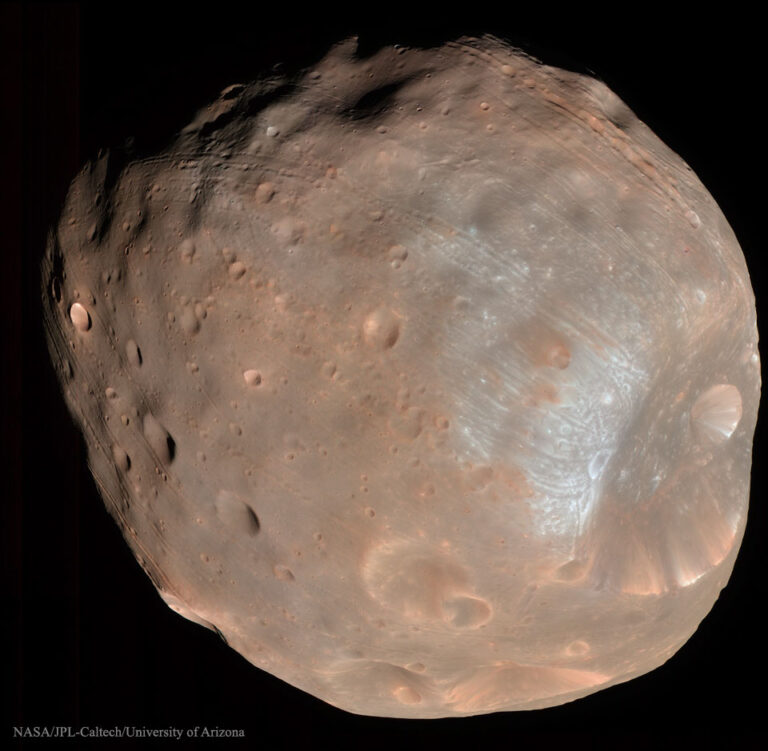2023年3月12日 Saturn’s Hyperion: A Moon with Odd Craters Image Credit: NASA, ESA, JPL, SSI, Cassini Imaging Team Explanation: What lies at the bottom of Hyperion’s strange craters? To help find out, the robot Cassini spacecraft that once orbited Saturn swooped past the sponge-textured moon and took images of unprecedented detail. A six-image mosaic from the 2005 pass, featured here in scientifically assigned colors, shows a remarkable world strewn with strange craters and an odd, sponge-like surface. At the bottom of most craters lies some type of unknown dark reddish material. This material appears similar to that covering part of another of Saturn’s moons, Iapetus, and might sink into the ice moon as it better absorbs warming sunlight. Hyperion is about 250 kilometers across, rotates chaotically,…







